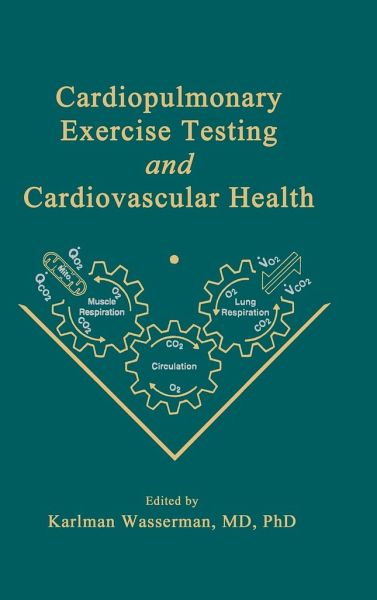
Cardiopulmonary Exercise Testing and Cardiovascular Health
Versandkostenfrei!
Versandfertig in über 4 Wochen
143,99 €
inkl. MwSt.

PAYBACK Punkte
72 °P sammeln!
Cardiopulmonary Exercise Testing and Cardiovascular Health describes new research and findings relevant to cardiovascular health as assessed by cardiopulmonary exercise testing. It brings together investigational cardiologists, pulmonologists and scientists who share a wealth of experience needed to judge the cardiovascular health, and the impairments of patients with a variety of illnesses. It presents the latest applications of cardiopulmonary exercise testing, including the use of computers and rapidly responding gas analysers, which make it possible to evaluate the cardiovascular system in...
Cardiopulmonary Exercise Testing and Cardiovascular Health describes new research and findings relevant to cardiovascular health as assessed by cardiopulmonary exercise testing. It brings together investigational cardiologists, pulmonologists and scientists who share a wealth of experience needed to judge the cardiovascular health, and the impairments of patients with a variety of illnesses. It presents the latest applications of cardiopulmonary exercise testing, including the use of computers and rapidly responding gas analysers, which make it possible to evaluate the cardiovascular system in a quantitative way. This book provides a comprehensive, updated presentation of the information that can be gained by cardiopulmonary exercise testing to assess the health of the cardiovascular system as a whole, and its individual components. It heralds a new era in which the instrumentation provides accurate measurements and the functions of the heart, pulmonary, and peripheral circulations and the lungs can be described quantitatively in graphical form. This enables the physician and investigator to measure the degree of success with which the cardiovascular system supports the O2 supply for the energy-generating mechanisms needed to sustain life.




